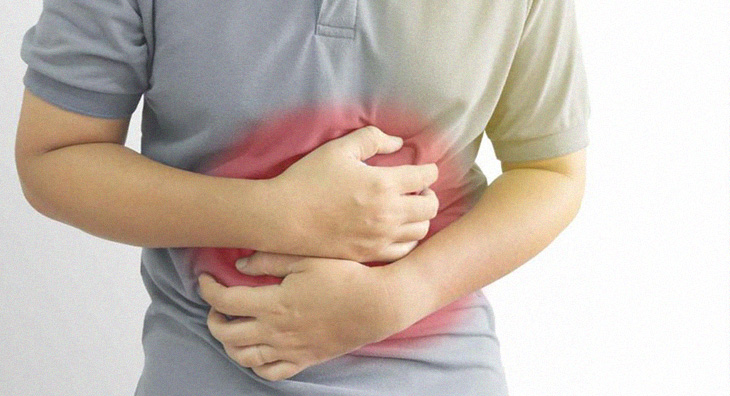
Crohn’s Disease is explained as an inflammatory bowel disease, otherwise known as IBD. This condition creates issues within the digestive tract, causing inflammation that leads to abdominal pain, fatigue, severe diarrhea, weight loss and overall malnutrition. Depending on each person’s personal experience, Crohn’s disease can become problematic in different parts of the digestive tract.
This also means that it makes it that much harder to figure out how to stop the pain. Plus it is also known to cause discomfort that can go anywhere from mild to severe. And although it normally affects the small intestine and the colon, it can also cause problems all throughout a person’s gastrointestinal tract (GI), generating more problems all throughout the body.
If you happen to be dealing with Crohn’s Disease, changing your diet and making sure that your overall GI health is at its best can help minimize any symptoms of this sickness. Of course helping mitigate these symptoms also depends on each and every person’s personal case.
And as much as the severity depends on each and every person’s personal case, there are 5 key ways to change your diet in order to help deal with these symptoms.
1. Personalize Diet Plan Preferences
Because Crohn’s Disease affects each and every person differently, there isn’t any one diet or meal plan that will work for everyone. To make matters even more frustrating, symptoms of Crohn’s can change for people as well, even if they’ve been dealing with it for a while. According to a registered dietitian at Michigan Medicine that happens to specialize in digestive health, R.D.N. Emily Haller, she explains, “Dietary recommendations should be tailored individually for those with IBD and consider many factors including but not limited to disease activity, medications, age, food tolerances and intolerances, laboratory findings, clinical symptoms, as well as the person’s goals.”
Another great tip would be to write down everything you eat and see how it affects your gut and your body. This will help identify what food causes inflammation and unnecessary flareups. Of course working with a specialist like Haller, or a GI dietician, can also help create a diet plan that will benefit your needs and your condition the most.
2. Don’t Consume “Problem” Foods
An additional way to help alleviate Crohn’s Disease symptoms is to not consume “problem” foods in the first place. These include spicy foods, caffeine and alcohol, which can all worsen any underlying symptoms living within the digestive tract already. Other types of drinks like soda and seltzer that are carbonated also create more gas, making the gut even more distressed. Another problem food would be those that are considered “fast foods” like French fries and greasy burgers. These tend to lead to gas, an upset stomach, diarrhea or all of the above. Unfortunately, bland and boring food might actually be your best bet at exacerbating the symptoms.

3. Target Eating Fiber
For patients that don’t suffer from strictures, which is when scar tissue builds up and creates areas within the intestine to get narrow, or obstruction symptoms which cause cramping, vomiting, constipation, a swollen abdomen or constipation – all signs that point to a blocked intestine – then they can actually eat more fiber every day. Dietitian Haller suggests having at least 30 to 38 grams of fiber a day if possible.
According to Haller, “Fiber intake may protect against flares in those with Crohn’s disease.” A study showed that ‘those who at 23 grams of fiber a day were 40 percent less likely to have a flare at six months compared to those who at 10 grams per day.’ This is because fiber is a well-known nutrient that creates a healthy and thick protective mucus layer in the gut. Haller also suggests adding an extra 3 grams of fiber per day by eating certain foods like chia seeds, quinoa, raspberries, potatoes with skin, and cooked oatmeal.
Of course for those that do have strictures or possible obstruction issues, they should stay away from certain foods high in fiber like seeds, nuts and raw vegetables since these can create more problems. Again, speaking with a professional dietician to come up with the proper diet plan for your particular case would be best.
4. Remove Dairy When Possible
One other way to help minimize Crohn’s manifestations is to remove diary products from your diet when possible. Patients that suffer from IBD, with symptoms of diarrhea, gas and abdominal pain, normally feel better when they stop dairy. Some don’t even know that they are actually lactose intolerant, meaning their body cannot actually digest milk sugar lactose found in dairy products. By choosing to remove such foods like milk, butter, cheese, cream, and many others, symptoms of this debilitating disease can lessen and make you feel a lot better.
5. Say No To Sugar
People choose to remove sugar from their diets for a number of reasons, and those suffering from Crone’s Disease can benefit as well. Unfortunately, fructose – even natural sugars found in fruit, honey and certain veggies – can cause bloating, abdominal pain and diarrhea, as well as make other symptoms worse. According to Haller, excess sugar intake causes ‘microbial imbalance and weakening intestinal gut barrier function.’ When possible, watch out for foods containing fructose, crystalline fructose, high fructose corn syrup and others and refrain from ingesting them.
If you suffer from Crohn’s Disease and have attempted to follow these 5 tips and yet you still feel reoccurring symptoms, remember that it is always best to see a doctor and a dietician to best deal with these health issues in order to be able to live your best and healthiest life!



